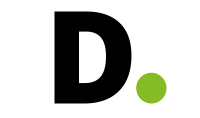Employee training tracking software plays a vital role in helping HR teams, L&D professionals, and managers stay on top of workforce development. From onboarding to compliance, skill upgrades, and certifications, these tools ensure that employee growth is measurable and aligned with organizational goals.
In 2025, the demand for smart, automated, and analytics-driven training tracking platforms has surged, particularly in hybrid and remote workplaces where visibility into learning progress is key.
Here’s a curated list of the 10 best employee training tracking software tools in 2025, based on functionality, ease of use, reporting capabilities, integrations, and overall value.
1. TalentLMS
Overview:
TalentLMS is a cloud-based training platform known for its clean interface, scalability, and ease of use. It’s ideal for companies that want to deliver, track, and measure training across multiple teams or locations.
Key Features:
- Customizable training paths and user roles
- Built-in course authoring and content marketplace
- Detailed reporting and progress tracking dashboards
- Certification and compliance management
- SCORM and xAPI compatibility
Best For:
Organizations seeking a user-friendly, all-in-one LMS for scalable team training.
2. Absorb LMS
Overview:
Absorb LMS combines powerful training tracking with rich analytics and automation. Its intuitive design makes it easy to deliver training across departments, customers, and partners.
Key Features:
- Robust reporting engine with custom filters
- AI-powered course recommendations
- Mobile-first user interface
- Compliance tracking and auto-certifications
- Seamless integrations with HRIS and CRM tools
Best For:
Enterprises and mid-sized businesses looking for a high-performance training platform with strong analytics.
3. Trainual
Overview:
Trainual is purpose-built for onboarding, SOP documentation, and training management, making it a favorite for startups and small businesses scaling their teams.
Key Features:
- Step-by-step process documentation
- Role-based training assignment
- Read receipts and completion tracking
- Integration with Slack, Gusto, and QuickBooks
- Built-in templates for faster course creation
Best For:
Small businesses that want to scale knowledge sharing and new hire training quickly.
4. LearnUpon
Overview:
LearnUpon provides a flexible and feature-rich LMS that supports internal, external, and customer training. It simplifies course delivery, user management, and progress tracking at scale.
Key Features:
- Multi-portal functionality for different audiences
- SCORM-compliant course support
- Custom reports and dashboards
- Certificates and assessment tools
- SSO and robust API support
Best For:
Organizations need a centralized training solution for multiple audiences (employees, customers, partners).
5. Litmos
Overview:
SAP Litmos offers fast deployment, AI-based content recommendations, and advanced analytics, making it a preferred platform for global enterprises with complex training needs.
Key Features:
- Built-in compliance management
- Extensive course library
- Real-time learning path tracking
- Offline learning capabilities
- Integrates with Salesforce, Zoom, and Microsoft Teams
Best For:
Large organizations need global training rollouts with enterprise-grade features.
6. SkyPrep
Overview:
SkyPrep provides a sleek, cloud-based LMS ideal for training teams, partners, and customers. Its focus is on simplicity, automation, and efficiency.
Key Features:
- Visual progress tracking and performance reports
- Gamified learning experience
- White-labeling and branding support
- Role-based permissions and custom learning paths
- Quick setup and admin-friendly UX
Best For:
Businesses are looking for a modern, easy-to-implement LMS without the complexity.
7. Cornerstone Learning
Overview:
Cornerstone Learning is a robust solution for organizations with advanced learning and compliance needs. It supports AI-powered learning paths, skills mapping, and predictive analytics.
Key Features:
- Personalized learning experiences
- Skills graph and gap analysis
- Automated compliance tracking
- Mobile and offline learning
- Powerful integrations with ERP, HRIS, and content providers
Best For:
Enterprises with sophisticated L&D programs and long-term workforce planning goals.
8. 360Learning
Overview:
360Learning is a collaborative learning platform that turns internal experts into course creators, making training more agile and contextual.
Key Features:
- Collaborative authoring with peer feedback
- Advanced course analytics and learner engagement tracking
- Workflow automation and scheduling
- Custom learning tracks for individuals and teams
- Integrations with Google Workspace, HR platforms, and Slack
Best For:
Companies that want to encourage peer-driven learning and internal knowledge sharing.
9. Docebo
Overview:
Docebo is a powerful AI-powered LMS built for enterprises that want to deliver personalized, scalable learning experiences across the organization.
Key Features:
- Automated learning journeys based on AI recommendations
- Rich tracking of learner behavior and engagement
- eCommerce support for external training monetization
- Multi-language, multi-domain functionality
- Enterprise-grade analytics and APIs
Best For:
Enterprises that require an intelligent, automated training platform with global reach.
10. Trakstar Learn
Overview:
Trakstar Learn (formerly Mindflash) is an intuitive training software designed to make employee onboarding, compliance, and continuous learning easy to manage.
Key Features:
- Drag-and-drop content creation
- Progress tracking and quiz assessments
- SCORM support
- Mobile learning compatibility
- Integration with Salesforce and Microsoft tools
Best For:
Organizations focused on compliance and role-specific employee development.
Key Benefits of Using Employee Training Tracking Software
Whether you’re in HR, operations, or L&D, training tracking software provides you with the tools to:
- Ensure compliance: Stay on top of mandatory certifications and regulations.
- Increase engagement: Make learning interactive, personalized, and gamified.
- Track performance: See how employees progress, where they struggle, and how to improve training.
- Align goals: Match learning objectives with business KPIs and individual development goals.
- Reduce admin time: Automate assignments, reminders, and reporting.
How to Choose the Right Training Tracking Software
Before selecting a platform, consider the following:
1. Company Size & Growth Plans
Choose a scalable tool if your team is expanding. Some platforms cater specifically to small businesses, while others are better for global enterprises.
2. Ease of Use
An intuitive dashboard and simple course creation features reduce friction for both administrators and learners.
3. Integration Capabilities
Ensure the platform integrates with your HR system, payroll, or other business apps like Zoom, Slack, or Microsoft Teams.
4. Tracking & Reporting Depth
Look for customizable dashboards and reports that provide insight into progress, completion rates, assessment scores, and certifications.
5. Content Creation Options
Some tools offer built-in authoring features, templates, or access to content libraries, which is especially helpful for companies without a dedicated L&D team.
6. Mobile & Remote Access
In 2025’s hybrid workplace environment, mobile-friendly platforms with offline functionality are a must-have.
Final Thoughts
Employee training tracking software is no longer a nice-to-have — it’s a core part of workforce strategy in 2025. Whether you’re onboarding new hires, upskilling your team, or maintaining compliance, the right platform ensures training isn’t just delivered — it’s effective, measurable, and aligned with your business goals.
Each of the 10 platforms above has strengths suited for different business types. When choosing, consider your unique needs, workforce size, and long-term goals.










